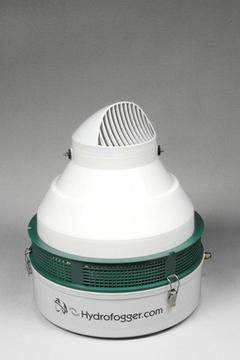How
to Properly Maintain and Clean Your Industrial Fogger?  An industrial fogger sprays a disinfectant mist. It is generally used for large areas. Foggers can be used for the disinfection of medical equipment, warehouses, factories, and other areas. It helps clean the air and surfaces in places a small fogger can’t reach. If you want your fogger will function well for a long time, clean it regularly. Proper maintenance of the machine is a must. Features Of Industrial Fogger These are heavy-duty machines that are designed to control bacteria, cockroaches, pests, etc. They have a large tank to hold more solutions. So, you can cover bigger areas without refilling often. A powerful motor is included to create a thick, dense fog. This helps distribute the solution evenly across surfaces. Some models also come with a telescopic pole. Its length can be adjusted. That means you can easily reach high or hard-to-reach places. This makes the machine useful for:
Overall, these features make the industrial fogger more efficient to use. Uses Of Industrial Fogger An industrial fogger is used to spray fine mist or fog in large areas for various purposes.
They can cover large areas quickly. It makes them useful in maintaining cleanliness as well as safety. This is the reason that they are used on a large scale in different industries. Simple Steps for Cleaning Fogger 1. Empty the Solution Tank After you finish using the fogger, empty the tank. The liquid in the tank can clog the nozzle. This will affect the fogger's performance. 2. Rinse Thoroughly Next, fill the tank with clean water. Turn on the fogger. Let it run for a few minutes. This will help flush out any remaining disinfectant. Rinsing is important. It ensures that no chemicals are left behind that could harm the machine or affect future use. 3. Clean the Nozzle Remove the nozzle from the fogger. Clean with a soft brush. Remove any buildup that may have formed during use. Keep the nozzle clean. This will help the fogger produce an even spray. 4. Wipe Down the Exterior Using a damp cloth, wipe down the outside of the fogger. Focus on areas where liquid might collect. That is check the seams and edges. This step keeps the fogger looking good. It prevents dirt from building up. 5. Air Dry Completely Finally, let the fogger air dry completely before storing it. Keep it in a dry place. This is to prevent rust and mold from developing. Proper drying improves the machine’s lifespan and performance. Key Things to Remember When Using a Fogger 1. Follow the Manufacturer's Guidelines Always read and follow the instructions provided by the industrial fogger manufacturer. The user manual will give you specific directions on:
This is the best way to check if you are taking care of it correctly. 2. Take Safety Measures Safety is important when using a fogger. This is important when handling chemicals. Wear the right protective gear, such as gloves and goggles. This is to protect yourself from harmful disinfectants or any chemical exposure. 3. Check Chemical Compatibility Before using any disinfectant, check that it is suitable for your fogger. Using the wrong kind of solution can damage the machine. It can affect its performance. It’s always a good idea to use the products recommended by the manufacturer. 4. Clean and Maintain Regularly Cleaning your fogger after each use is essential. Empty the solution tank and rinse it thoroughly with clean water. A more in-depth cleaning, like cleaning the nozzle and exterior, should be done regularly. This is to keep the machine in top condition. By following these steps, your fogger will last longer and work better. It will protect your investment and also keep you safe. Also, it will give you the best results with each use. What to Do If Your Industrial Fogger Isn’t Working Properly? Here are some simple steps to follow: 1. Check the Power: Check if the fogger is plugged in properly. Also, check if the power source is working. If it’s battery-operated, check if the battery needs to be charged or replaced. 2. Inspect the Solution Tank: Check if the tank has the right amount of solution. Also, ascertain that it’s not clogged. Sometimes, buildup or blockages in the tank can cause issues. 3. Clean the Nozzle: A clogged nozzle is a common problem. Remove the nozzle. Clean with a soft brush. This is to remove any debris or chemical buildup. 4. Check for Leaks: Look for any signs of leaks around the hoses or tank. If you find any, you might need to replace the damaged parts. 5. Review the Manual: Go through the manufacturer’s manual. Check for troubleshooting tips specific to your industrial fogger model. If none of these steps will work, do not waste time. Contact the manufacturer or a professional for repair. Regular maintenance of the fogger can help prevent these issues from happening in the future. Wrapping Up Improve the life of your fogger machine with these easy maintenance tips. If you have any queries then consult an expert. For more details on fogger machines and humidifiers, you can check Hydrofogger.com. We are known for products like high-quality humidifiers. You can contact our expert team for the complete details of our products. |
| ||||||||||||||||||||||||||||||||||||||||||||












































